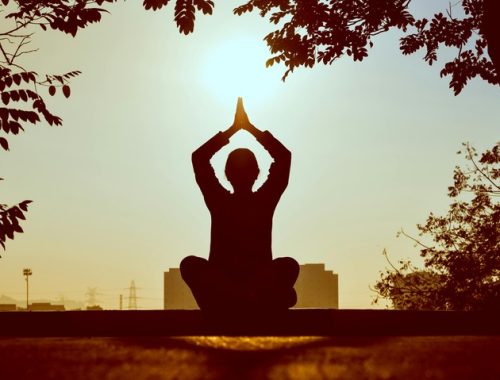
What Are Some Ways to Relieve Stress That No One Talks About ?
Progressive Nostalgia to Relieve Stress
Nostalgia often feels bittersweet, but you can make it a constructive force by reflecting on cherished memories and connecting them to your future aspirations. Think of a time when you felt happy, accomplished, or at peace. Ask yourself: What skills, values, or lessons did that moment give me? How can I bring those qualities into my future? For instance, if you fondly remember childhood summers painting or exploring outdoors, consider how those passions could inspire your hobbies or career today. This practice blends comfort and hope, helping you feel anchored in your past while looking forward with intention.
Conscious Sighing
A deliberate sigh is more than just a physical release—it’s a signal to your body to let go of tension. Sit or stand comfortably, take a slow, deep breath in through your nose, and then exhale through your mouth with an audible sigh. Let your shoulders drop and your body soften as you exhale. Repeat this several times, focusing on the sensation of release. Conscious sighing resets your autonomic nervous system, shifting you from a stressed “fight-or-flight” state to a relaxed “rest-and-digest” mode. It’s a quick, effective way to calm your body and mind anytime, anywhere.
Laughter Yoga
Laughter yoga is a playful yet powerful practice that combines intentional laughter with breathing exercises. Start by faking laughter—it may feel awkward, but that’s part of the fun. Soon, the act of laughing becomes contagious, transforming into genuine joy. Incorporate playful movements, like clapping or chanting, to deepen the experience. This practice releases endorphins (the body’s “feel-good” chemicals), reduces stress hormones, and boosts oxygen flow to your brain and body. It’s not about humor; it’s about the physiological and emotional benefits of laughing. Try joining a laughter yoga group or following an online session for a guided experience.
Forest Bathing (Shinrin-Yoku)
Originating in Japan, Shinrin-Yoku translates to “forest bathing,” but it doesn’t involve water. Instead, it’s about immersing yourself in a natural setting and engaging your senses fully. Find a quiet forest, park, or garden, and wander without a specific goal. Pay close attention to the rustling of leaves, the earthy scents, and the interplay of light and shadow. Touch tree bark, feel the cool breeze, and let the natural surroundings ground you in the present moment. Research shows that spending time in nature can lower cortisol levels, reduce blood pressure, and improve overall well-being. Forest bathing isn’t about exercise or achievement—it’s about reconnecting with the earth and yourself.
Cleaning with Purpose
Cleaning is more than just a chore; it can be a therapeutic act. Choose a space you frequently use, like your desk, bedroom, or kitchen, and clean it with intention. Pay attention to the process: feel the textures of the items, notice the transformation as clutter disappears, and reflect on the importance of this space in your life. This mindful approach not only leaves the space physically clean but also reduces mental clutter, offering a sense of accomplishment and control over your surroundings. Bonus: Add a personal touch, like a plant or scented candle, to make the space more inviting.
Creating Micro-Adventures
You don’t need a grand vacation to spark excitement. Micro-adventures are about adding small bursts of novelty to your routine. These could include exploring a nearby hiking trail you’ve never visited, taking a random turn during your commute to discover something new, or spending an afternoon learning a craft you’ve never tried. The goal is to break monotony and cultivate a sense of wonder and curiosity in your everyday life. Documenting these experiences through journaling or photography can add another layer of fulfillment.
Petting Animals with Intention
Spending time with animals has proven therapeutic benefits, such as reducing stress and boosting mood. Engage with animals intentionally, focusing on the interaction itself. Feel their fur, observe their behavior, and enjoy the unconditional affection they offer. If you don’t own a pet, consider volunteering at a local animal shelter, visiting animal therapy centers, or spending time at an animal café. These experiences not only improve your mental well-being but also foster empathy and connection to other living beings.
Practicing Silence
Silence can be a powerful tool for grounding yourself. Dedicate 5–10 minutes daily to complete silence, free from talking, music, or screens. Find a quiet spot, sit comfortably, and let your mind settle. Resist the urge to actively think or solve problems—just observe your thoughts as they come and go. This practice can help you develop clarity, improve self-awareness, and recharge mentally. Over time, it becomes a space for introspection and inner peace in an often noisy world.
Sensory Reset
Sometimes, our minds get overwhelmed, and a sensory reset can help ground us in the present moment. Focus on activating one or more of your senses to disrupt stress or mental overload:
- Hearing: Listen to calming or intriguing sounds, like binaural beats, nature recordings (e.g., rain or ocean waves), or ambient music. These can create a soothing atmosphere or spark curiosity.
- Touch: Hold an ice cube or dip your hands in cold water to jolt your awareness back to physical sensations. Alternatively, run your fingers over different textures like a soft fabric or smooth stone.
- Smell: Engage your sense of smell with essential oils (like lavender for relaxation or citrus for energy) or spices that evoke positive memories.
- Sight and Taste: Observe vibrant colors or savor a unique, flavorful snack to fully immerse yourself in the moment. This practice can shift your focus and calm your nervous system.
Writing a Gratitude Letter
Gratitude has a transformative effect on mental well-being. Take time to write a heartfelt letter to someone who has made a positive impact on your life. Whether it’s a mentor, friend, family member, or even someone who helped you in a small but memorable way, reflect on specific moments and express your appreciation. You don’t need to send the letter—writing it is enough to foster a sense of connection, positivity, and calm. If you feel inspired, you can share the letter, amplifying the joy for both of you.
Visualizing Safe Spaces
Guided visualization can help you create an internal retreat from stress. Close your eyes and imagine a place where you feel completely safe and at ease. This could be a real location, like a beach or childhood home, or an imagined one, like a cozy cabin in the woods or a serene fantasy world. Engage all your senses in the visualization—imagine the sounds, smells, textures, and even the temperature of this space. Return to this safe haven whenever you need a mental escape or to ground yourself during anxious moments.
Cold Water Therapy
Cold water has surprising benefits for mood and focus. Start small: splash cold water on your face, particularly targeting your cheeks and the area under your eyes. This activates the “diving reflex,” which can lower your heart rate and help you feel calmer. If you’re feeling more adventurous, try a brief cold shower or even dip your hands or feet in cold water. It’s an invigorating practice that leaves you feeling refreshed, awake, and more balanced.
Doodling or Adult Coloring
Art doesn’t have to be perfect to be therapeutic. Grab a pen or coloring book and let your creativity flow without judgment. Doodle patterns, mandalas, or abstract shapes, focusing on the repetitive and soothing motions. Adult coloring books featuring intricate designs can help you relax and enter a meditative state. The process—not the result—matters most, as it provides a mindful escape from daily stress.
Listening to Foreign Language Songs
Music in an unfamiliar language offers a unique experience. Since you may not focus on the lyrics’ meaning, you’re free to enjoy the melody, rhythm, and vocal expression. It can engage your brain in a novel way without overloading it. Explore genres like French chansons, Korean ballads, Spanish flamenco, or Bollywood classics to discover new favorites. This practice is especially useful for unwinding or sparking creativity.
Breaking Plates (Safely)
Smashing plates or pottery can be a cathartic release of built-up tension and frustration. Find a safe environment, like a rage room or your backyard (lined with a tarp for easy cleanup). Use old or thrifted items you no longer need, ensuring they’re free of sharp edges or harmful materials. As you smash each piece, focus on releasing specific thoughts, emotions, or stresses. This physical act of release can be deeply satisfying, leaving you feeling lighter and more in control.





